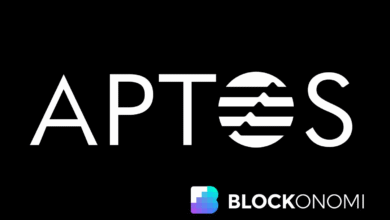Bitcoin Mining Update: Key Insights for July/August 2025

In the latest Bitcoin mining update, the cryptocurrency industry is witnessing a remarkable surge as the network approaches an unprecedented 1 ZH/s hashrate. This milestone, however, is accompanied by a narrative of tightening profit margins and evolving market dynamics, greatly influenced by mining revenue analysis. Recent trends in Bitcoin hashrate illustrate both challenges and opportunities for public miners, with companies like MARA and IREN significantly enhancing their positions in the market. Despite these advancements, regulatory impacts on mining continue to loom, with U.S. tariffs on mining equipment creating financial strain for larger operations. Stay tuned as we dive into the intricate details of recent cryptocurrency mining news, offering insights on performance and the future of Bitcoin mining.
As we delve deeper into the realm of Bitcoin extraction and network performance, this Bitcoin mining update sheds light on current industry dynamics that shape profitability and operational strategies. The surge in computational power signifies not only the growth of mining operations but also reflects the shifting landscape of regulatory frameworks and market movements. With an analysis of public miner metrics and behavioral shifts, stakeholders can better understand the implications of external economic factors on their ventures. Moreover, the evolving trends in Bitcoin hashrate and mining efficiency reveal critical insights that can guide investment decisions moving forward. In a sector where every percentage counts, staying informed about mining revenue and regulatory impacts is crucial for success.
Current Bitcoin Mining Landscape
The current Bitcoin mining landscape is characterized by unprecedented challenges and opportunities. As the network approaches the significant threshold of 1 ZH/s, miners are grappling with tighter margins caused by fluctuations in Bitcoin prices and an increasingly competitive environment. These issues are compounded by a sharp rise in mining difficulty levels, which recently hit an all-time high of 129 trillion. Miners need to employ advanced strategies and technologies to maintain profitability in this rapidly evolving sector.
Moreover, the increased hashrate has resulted in a pronounced decline in miner revenues. Hashprice has dipped below $60 per petahash per second, a stark contrast to previous highs, signaling a potential rethink in operational efficiency among miners. This situation is further complicated by transaction fees that have dropped below 1% of overall block rewards for the first time, revealing the importance of scalability and innovation in mining operations for sustained revenue generation.
Bitcoin Mining Update: Market Dynamics and Trends
In the July/August 2025 BTC mining update, significant trends have surfaced that warrant attention from industry stakeholders. Public miners, namely MARA, IREN, Cleanspark, and Cango, have solidified their foothold, claiming nearly 20% of the total rewards distributed in July. This dominance indicates a shift towards institutional involvement in the mining ecosystem, where public entities are leveraging their resources to optimize operations amid a challenging landscape.
Conversely, the performance of publicly traded miners showcases a stark divergence in the stock market. For example, Terawulf experienced a 50% surge following its pivot to High-Performance Computing (HPC), highlighting a strategic shift that could influence future mining dynamics. As public miners become increasingly central to the market, understanding their performance metrics will be essential for investors and analysts alike.
Regulatory Impacts on Bitcoin Mining
Regulatory shifts are increasingly shaping the Bitcoin mining industry, particularly in light of new tariffs imposed on mining rigs in the United States. These tariffs have raised operational costs for miners, resulting in increased liabilities that could reach into the hundreds of millions. Such developments underscore the importance of regulatory awareness for organizations operating in the space, as changes can have profound effects on profitability and competitive advantage.
Additionally, ongoing conflicts with customs authorities may further complicate the domestic mining landscape. As miners navigate these regulatory waters, the need for lobbying and advocacy will likely grow, as will the demand for compliance solutions. The regulatory environment will continue to be a deciding factor in shaping the future trajectory of Bitcoin mining, making it imperative for stakeholders to stay informed and proactive.
Bitcoin Hashrate Trends and Market Implications
Bitcoin hashrate trends are crucial indicators of the health and competitiveness of the mining sector. The recent rebound in hashrate, after a period of summer curtailments, indicates a return to optimism among miners. However, this uptick also exerts additional pressure on the mining difficulty, creating a tight margin environment that miners must navigate carefully. Understanding these trends is essential for miners looking to optimize their strategies and adapt to the fast-paced changes.
Furthermore, the fluctuations in hashrate play a significant role in market sentiment and investor behavior. As indicators of miners’ confidence and operational capabilities, trends in hashrate directly impact Bitcoin’s overall market dynamics. Stakeholders should closely monitor these developments to identify potential opportunities and risks that could affect their investments in Bitcoin and mining operations.
Mining Revenue Analysis: Challenges and Opportunities
The landscape for Bitcoin mining revenue is a complex one, with several interlinked challenges defining the current environment. As miner revenues come under pressure, it has become increasingly essential for miners to analyze and adapt their revenue models. With hashprice fluctuating and transaction fees declining, there is a pressing need for miners to innovate, perhaps by exploring alternative revenue streams or enhancing operational efficiencies.
However, within these challenges lie opportunities for advancement. Miners that can successfully integrate technology such as more efficient ASIC miners and renewable energy solutions may find themselves at an advantage. As the industry evolves, a thorough revenue analysis that accounts for operational costs, regulatory impacts, and market trends will be necessary for miners aiming not only to survive but thrive in this competitive landscape.
Public Miners Performance: A Comparative Analysis
The performance of public miners represents a crucial aspect of the overall Bitcoin mining ecosystem, providing insights into industry health and sustainability. Companies like MARA, IREN, Cleanspark, and Cango have been pivotal in shaping the competitive landscape, with their collective strategies influencing market dynamics. By analyzing their performance metrics, investors can gauge the effectiveness of their operations and identify potential investment opportunities.
Comparatively, while some public miners have excelled, others have faced challenges due to market conditions and operational hurdles. Understanding the factors contributing to the performance of public miners allows stakeholders to make informed decisions as they navigate an increasingly volatile market. As the public mining sector continues to expand, these performance indicators will be vital in shaping future investment strategies.
Impact of Technological Advancements on Mining Operations
Technological advancements play a critical role in the evolution of Bitcoin mining operations. As miners seek to improve efficiency and reduce costs, innovations such as AI-driven analytics and more efficient mining hardware have become increasingly relevant. These technologies provide miners with tools to optimize their processes, enhance throughput, and ultimately, secure more significant revenue, even in a challenging market.
Moreover, the adoption of renewable energy solutions has become an important trend, helping miners reduce their carbon footprint while cutting operational costs. As environmental concerns become more prominent, miners that innovate in this area may not only gain competitive advantages but also align with growing regulatory and consumer demands for sustainable practices, positioning themselves favorably for future growth.
Forecasting Future Trends in Bitcoin Mining
Forecasting future trends in Bitcoin mining requires a comprehensive understanding of both current and emerging market dynamics. Factors such as regulatory changes, technological advancements, and shifts in investor sentiment will play critical roles in shaping the direction of the industry. As miners continue to adapt their strategies, attention to these trends will be crucial for forecasting their long-term viability and success.
Analysts predict that the continuing evolution of public miners and their strategies will significantly influence market trends. Increased institutional investment may lead to greater stability and professionalization of the mining sector, while also impacting Bitcoin’s overall market performance. Keeping a close eye on these developments could allow stakeholders to make proactive, informed decisions in this rapidly changing landscape.
The Role of Renewable Energy in Mining Efficiency
The push for renewable energy in Bitcoin mining is gaining momentum as miners seek to balance profitability with environmental responsibility. Utilizing renewable sources can significantly lower operational costs, particularly in regions where energy prices are unstable or high. As public awareness and regulatory pressures concerning sustainability grow, miners who invest in green technologies will likely gain a competitive edge.
Moreover, the shift towards renewable energy can improve the overall public perception of Bitcoin mining. This may help address criticisms regarding its environmental impact, allowing miners to present a more socially responsible image. As more miners integrate sustainable practices into their operations, the industry as a whole could benefit from increased legitimacy and support, further enhancing its prospects.
Investment Strategies for Bitcoin Miners
As the Bitcoin mining landscape evolves, so too must the investment strategies employed by miners and stakeholders. Diversification of investments, particularly into alternative cryptocurrencies or supplemental mining technologies, has become an essential approach to mitigate risks associated with market volatility. Understanding the interconnectedness of Bitcoin and broader cryptocurrency trends is crucial for developing a robust investment strategy.
Additionally, as public mining companies demonstrate varied performances in the stock market, individual miners may benefit from analyzing these cases to refine investment decisions. By leveraging insights from top performers and understanding their strategic moves, miner-investors can position themselves to capitalize on emerging opportunities while minimizing potential pitfalls in a rapidly changing environment.
Frequently Asked Questions
What are the latest trends in Bitcoin mining updates for August 2025?
The latest Bitcoin mining update shows that the network’s hashrate has reached a new record nearing 1 ZH/s after rebounding from previous summer curtailments. This has led to an all-time high mining difficulty of 129 trillion, highlighting the ongoing competition among miners despite tightening revenue margins.
How do Bitcoin hashrate trends affect mining revenues in 2025?
In 2025, Bitcoin hashrate trends indicate that despite increased competition and higher difficulty levels, mining revenues remain under pressure. Hashprice is currently below $60 per PH/s, and for the first time, transaction fees account for less than 1% of block rewards, impacting overall profitability for miners.
What is the current performance of public miners in Bitcoin mining?
Public miners have significantly increased their performance in Bitcoin mining, claiming nearly 20% of the rewards in July 2025. Companies like MARA, IREN, Cleanspark, and Cango are leading the way, with IREN noted for its high utilization rates, showcasing the shifting dynamics in the cryptocurrency mining sector.
What regulatory impacts on Bitcoin mining should miners be aware of?
Regulatory impacts on Bitcoin mining are becoming more pronounced, especially with recent U.S. tariffs on mining rigs sharply increasing. These tariffs could expose major miners to potential liabilities in the hundreds of millions, which is crucial for miners and investors to consider when planning their operations.
How are mining revenues affected by Bitcoin market conditions in 2025?
Mining revenues in 2025 are influenced by several market conditions, including falling hashprices and reduced transaction fee contributions. With hashprice remaining below $60 per PH/s, miners face challenges in maintaining profitability despite high hashrate and difficulty levels.
| Key Point | Details |
|---|---|
| Bitcoin Hashrate | The network hashrate has reached a historic milestone of 1 ZH/s, showing recovery after summer curtailments. |
| Difficulty Level | Difficulty levels have hit an all-time high of 129 trillion due to increased hashrate. |
| Miner Revenues | Mining revenues are declining, with hashprice below $60/PH/s and transaction fees dropping. |
| Market Share | Public miners like MARA, IREN, Cleanspark, and Cango control nearly 20% of mining rewards for July. |
| Regulatory Pressures | U.S. tariffs on mining rigs are increasing, leading to potential liabilities for major miners. |
| Stock Market Divergence | Market performance has diverged, with some companies like Terawulf experiencing a surge after changing strategies. |
Summary
Bitcoin mining update reveals significant shifts in the mining landscape, highlighted by record hashrates and unprecedented regulatory challenges. As miners adapt to tightening margins and increased tariffs, the market dynamics are reshaping the sector. Despite rising difficulty levels, miner revenues continue to be pressured, emphasizing the need for strategic pivots for long-term sustainability.




